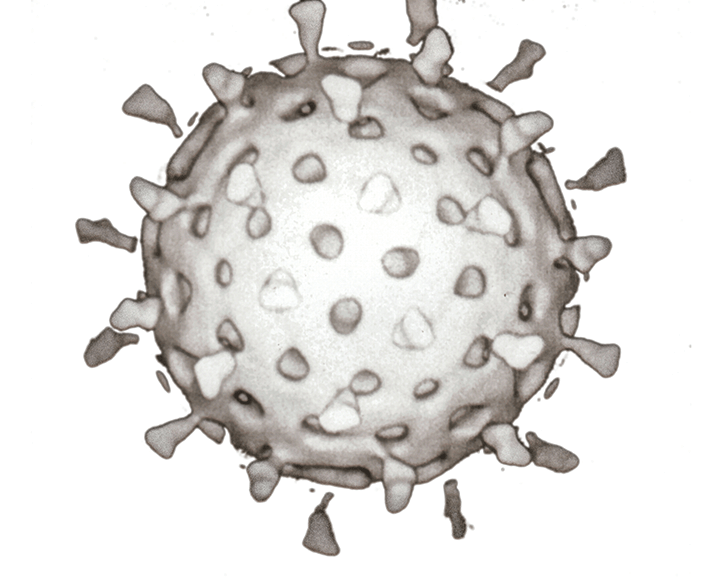A research team investigating viruses began their work hoping to find out more about the mechanistic molecular details of RNA viruses, but the results far exceeded their expectations; the group says it has discovered and cracked the ‘code’ that enables virus assembly (1). Understanding this code means that researchers could potentially prevent virus deployment, offering a new path of drug discovery. Until now, virus assembly – although an impressive feat – was thought to rely on simple electrostatic interactions between positive coat proteins and negatively charged RNA. Peter Stockley, who led the work at the Astbury Centre for Structural Molecular Biology at the University of Leeds tells us more.

What set the project in motion? Despite progress with vaccines, viruses remain a major threat to human health, as well as causing significant commercial loses to crops and livestock. They are also fascinating molecular machines built for repeated cycles of infection and new virus production. How they achieve these goals is a challenging research problem and we have been fascinated by how at a particular point in the virus lifecycle they spontaneously wrap their genetic material into viral capsids, which are protective transport vehicles to the next host cell. This is the process of virus assembly.
How did the code elude other researchers? The viral RNA contains two sets of codes. The first, which we have been able to translate for decades, is the genetic code defining the viral protein components. We were able to discover and decode the second by combining experiments with highly specialized bioinformatics analyses carried out by our collaborator Reidun Twarock, professor of mathematical biology at the University of York. This effort in turn was a response to our development of single-molecule fluorescence correlation spectroscopy (smFCS) assays for studying virus assembly.
How was smFCS used? The smFCS allows us to look in real-time at the hydrodynamic radius of fluorescently dyed molecules in solution. The technique is ideal for virus assembly reactions because the radius changes dramatically as the small coat proteins and larger RNA form a virus particle. The single molecule aspect is also important because it allowed us to work at nanomolar concentrations where we saw features of the assembly mechanism, i.e., the packaging signal mediated assembly – essentially the assembly code hidden previously from view – that are lost at much higher concentrations normally used for such experiments. It is very satisfying to have realized that there were aspects to viral assembly that were not understood by the existing theories, to have been able to postulate a new idea that explains what we were seeing, and then to do the tests to show that this is in fact the case. Like all the best scientific ideas, we have arrived at the current understanding with more experiments that need to be done, which is great.
What were the main challenges? This type of analysis for viral assembly reactions is very new and so we had to check constantly that the things we saw happening in smFCS could be interpreted correctly. My colleague Roman Tuma, who is an expert spectroscopist, was instrumental in this. A different kind of challenge was (and in some places still is) the skepticism of colleagues who did (do) not believe that such a mechanism could exist and have remained undetected. The latest results have allowed us to turn a corner with the bulk of the field now realizing that previous ideas were far too simplistic. Your work will surely have an impact on drug discovery... We have shown that a new mechanistic aspect of virus assembly occurs in viruses that infect bacteria, plants and humans. We believe we understand why it is so widespread: because they give the viruses that work this way a competitive advantage. If we can use small molecules to scramble the code, it would have an anti-viral effect. Thus, we have unlocked novel anti-viral drug targets. However, we will need to do a separate decoding experiment for every type of virus as we cannot immediately identify drugs that might block the common cold.
What next? The obvious next step is to extend the work to human viruses and begin to examine whether we can isolate anti-viral lead compounds that would provide proof of principle that this could generate clinically useful drugs. The work emerges out of curiosity driven research, mostly on model viruses that no one in the real world really cares much about… many governments only fund research that has clear, direct relevance, and the essential groundwork here would not have qualified for support. Indeed, reviews of laboratory allocation within my University concluded that in future we were unlikely to be funded, and as a result we had to give up facilities. We were saved because the preliminary smFCS results were clearly unexpected, hinted at a major discovery, and are still providing novel insights into these vital processes. It just goes to show that progress in science cannot be second-guessed by committees. Unless there is funding and resources for people doing “blue sky” projects, major breakthroughs will be missed.
References
- N. Patel et al., “Revealing the Density of Encoded Functions in a Viral RNA”, PNAS, 112 (7), 2227-2232 (2015).




